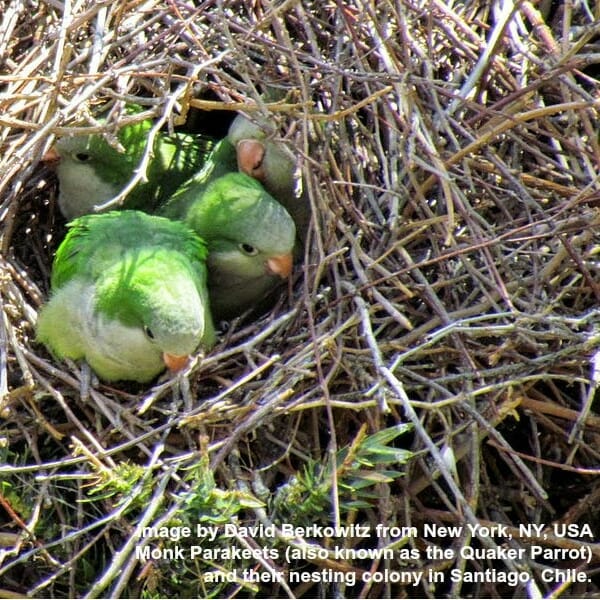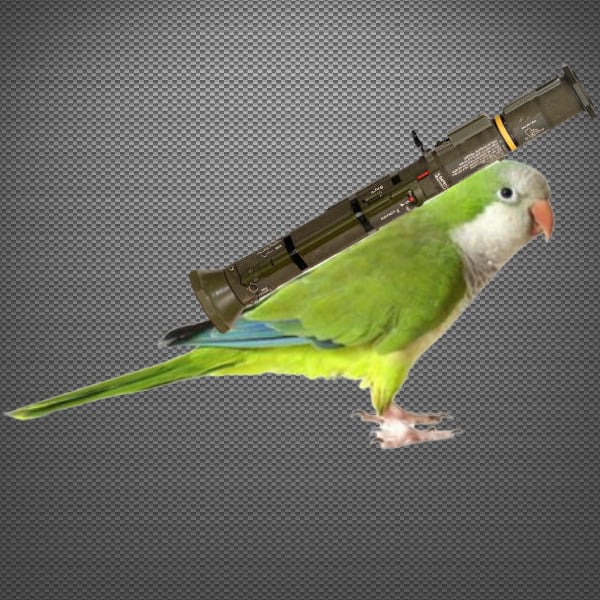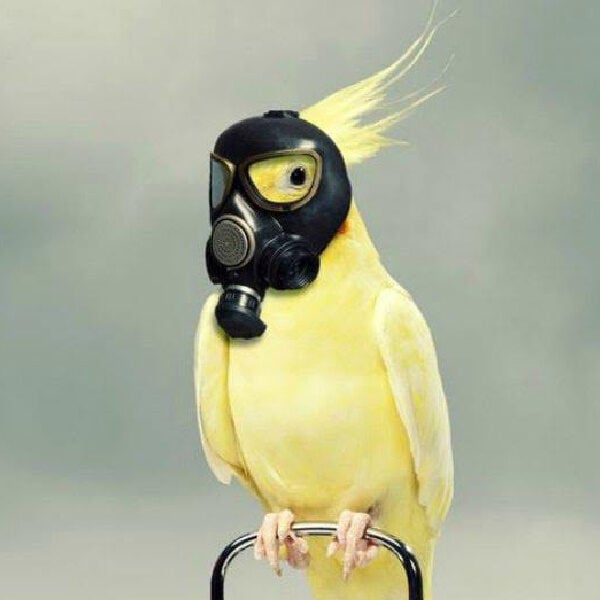Last Updated on by Mitch Rezman
I’ll let this sink in – I call it “sanity” A follow up to:
Debunking the myth of feral cats devastating US songbird populations
3,700,000,000 birds (feral cats *by themselves* through simple math are killing an estimated 1.4-3.7 billion birds per year… )
(If you accept statistics with a plus or minus 110% statistical accuracy)
1 year = 8,760 hours = 422,374 birds being eaten by feral cats every hour 24/7
8,447 birds being eaten by a feral cat in each of the 50 states every hour 24/7
Why aren’t I witnessing some zombie cat songbird apocalypse every time I walk out into the alley and take out garbage or recycling?
So John here’s the ying and the yang of feral cats killing 3.7 billion songbirds a year.
I dropped out of college three times but I’ve always liked math and feel comfortable in playing with numbers. Yes I admit I’ve taken this argument about the feral cats songbird thing to heart.
When I get to feel emotional about something, especially a subject based on “studies” and “data” I like to embrace math.
When I look at the numbers you present to me all I see is an absurdity.
Experience that moment when you walk into a room – wondering why you are in that room – but now you have a thought so big that it really doesn’t matter what room you are in – which just happened to me.
Why are these feral cats working so hard on free-flighted healthy songbirds rather than shopping bags made of twigs filled with sleeping birds hanging in trees that cats can easily climb?
I’m a bird guy. I study exotic birds – approximately 352 species of parrots and 372 species of parakeets – all day every day – for a living – for the past 14 years.
I’m a wild bird hobbyist – a tinkerer. I know exotic birds.
According to National Wild Life Federation: While a quarter of the world’s 352 parrot species are at risk of extinction in their native habitats, populations of introduced parrots in cities like Miami, Chicago, New York, and San Francisco appear to be growing.
How is this possible with feral cats eating 422,374 birds every hour 24/7?
We have tens of thousands perhaps millions of immigrant (feral) birds living on US soil (think starlings). They crossed our borders undetected. They did not add a nickel of sales tax to any pet shop in the US. They have no papers.
They don’t even speak English because they are from different continents. South America, Europe, and Africa. And you think these birds would be dumb and naïve about living here.
Quaker parrots a.k.a. monk parakeets have the nerve to show up here from Argentina and other South American countries.
I mean if you’re a bird and you have a choice between Buenos Aires and Chicago – winters really? Makes no sense! For whatever reason, they’re here now and have been surviving Chicago winters for decades.
A little groundwork is required. Parrots aka psittacine aka hookbill birds – in the wild they live in the hollows of trees under rocks and in the ground. Monk parakeets a.k.a. Quaker parrots from South America are the only parrots that build nests.
Not just nests but colonial nests allowing them to live together and keep each other warm through our miserable Chicago winters.

So we have these dumb, immigrant birds who don’t speak the language, don’t have a job and have to suck it up in Hyde Park. Basically large bags of woven sticks containing dozens of yummy sleeping monk parakeets hanging from the trees
My question is why has Hyde Park not become a feral cat ‘birdie pinata’ superstore with feral cats getting wait listed for a particular tree based on aldermanic ward status (this IS Chicago)?
Not only amazing – BIG surprise at the end
We know these are intimidating little birds, much like gang members in Chicago and other states. Gang up as intimidating flocks scaring the be-geezus out of humans because it is illegal to own a Quaker parrot in about 15 states. It’s like what if you bring a Quaker into your house? Before you know it there’s a 300 bird colony forcing you and your family into the streets – penniless.
Why else are we so scared of these little green birds? Feral colonies exist as far north as New York City, Chicago, Dallas, Wisconsin, Cincinnati, Louisville, Edgewater, New Jersey, coastal Rhode Island, Massachusetts, Connecticut, and southwestern Washington.
We know some smoke-filled back rooms weren’t involved because birds don’t do well with the smoke. So tell me John how are these feral birds avoiding feral cat genocide?
All these songbirds getting eaten are birds living in the wild that theoretically should have better survival instincts and skills and yet…
From Stanford University – Chief among our feral doves are the Ringed Turtledove and the Spotted Dove, both of which are well established in southern California. The Turtledove is also feral in central and southern Florida, Houston, and Mobile.
The Spotted Dove’s range extends from Santa Barbara south to San Diego and seems to be strongly associated with eucalyptus trees. In contrast to the Spotted Dove, which apparently was released intentionally at first, the Ringed Turtledove appears to have established itself through multiple escapes in and around the several cities it inhabits. Why are cats not picking on these birds living the urban cush life?
Quaker parrots – like the ones living in Chicago — were considered agricultural pests in Argentina. Because we do so many things Argentinians do, humans coordinated an eradication program in New York, New Jersey California, and Virginia – basically monk parakeet genocide.
But hey according to Stanford University they were wrong anyway and Quakers did not present a threat to the agricultural community here in the USA. But they are birds, so who cares – right?
Monk Parakeets have been reported killing Blue Jays and a robin, but there is no documented case of serious interference with natives – But they are birds so they don’t get the headlines
Mitered conures are found in California, Florida, and Hawaii which may constitute a cryptic species complex surviving against the odds – dodging and weaving the endless onslaught of feral cats – and surviving. Just doesn’t make a darn bit of sense.
Wild Parrots – Blue Crowned Conures in Central Florida
How do this 150 g (4 oz) feathered titans in Chicago convince feral cats to focus on rat protein – “if you know what’s good for you”.
Here are some of my responses to comments that you may have missed to my first article about the myth of songbirds eating feral cats:
To whom it may concern,
I am deeply troubled by the recent piece entitled “Debunking the myth of feral cats devastating US songbird populations” on your website. The article is rife with misinformation that is extremely harmful and misleading to any of your clientele, birds, people, or otherwise.
Feral cats do tremendous damage to wildlife. Studies have shown that just the presence of a single outdoor cat can decrease nesting success and dramatically increase stress hormones of even common birds such as the gray catbird. Feral cats have been directly responsible for the extinction of 33 bird species worldwide, and are contributing to the ongoing decline of many others, such as snowy plovers, New Zealand dotterels, and Hawaiian petrels.
Even their feces can be extremely harmful. Domestic cats are the definitive host for Toxoplasma gondii, a parasite that causes brain inflammation in beluga whales, has killed captive kangaroos in zoos, infects and kills wild sea otters and Hawaiian monk seals, and is linked to mental health disorders, abortions, and is the cause of the disease toxoplasmosis in humans.

Many baby Quaker parrot birth defects every spring
as a result of building a nest on electrical transformers for heat
In addition, you severely overestimate the number of bird species present in the United States in your attempt to “debunk” the number of birds directly killed by feral and outdoor cats. The American Bird Conservancy’s estimate of 800 species in the continental United States is absolutely correct. Wikipedia’s estimate of birds includes Hawaii and the various US territories in the Pacific Ocean.
While the continental United States may see more than 800 species annually, this is only due to the occasional stray or accidental individual bird that got blown in by a hurricane or got lost during migration. However, there are approximately 800 breeding bird species in the continental United States. Your estimate of 3000-4000 species in the continental United States is completely erroneous; there are only a little under 10,000 species worldwide, with many contained in tropical regions of the world (not the continental United States).
Many bird species in the United States are not flocking birds. While you are no doubt most familiar with captive and/or domesticated birds, which are mostly flocking birds because humans seek species that tend to be social as pets, many wild birds are small, solitary, and secretive. Many neotropical migrants (mostly small, very colorful birds that breed in the United States in spring and summer but overwinter in Central and South America) either nest directly on the ground (e.g. black-and-white warbler, ovenbird, etc.) or within easy reach of a cat (Kentucky warbler, blue-headed vireo, Swainson’s warbler, etc.).
In addition, your interpretation of the Christmas Bird Count is completely incorrect. The numbers you sited (64,818,439) as the total “count” of birds in the United States is just that… it’s the number of individual birds CBC participants actually counted in a 24 hour period. It is *NOT* the actual, total population of birds in the United States. Instead, the actual population estimate of birds in the United States is 10-20 billion. This number should alarm you…. because cats *by themselves* through simple math are killing an estimated 1.4-3.7 billion birds per year… which is anywhere from 5-30% of all individual birds in the United States at any given time (source: http://birdstuff.blogspot.com/2002/07/how-many-birds-are-there.html)
In addition, 655 species were counted in the Christmas Bird Count… far closer to the ABC’s estimate of 800 bird species in the United States than your inaccurate guess of 3000-4000 species in the United States.
I understand that people like cats. However, it is not okay to gloss over the extreme damage feral and outdoor cats do to our struggling wildlife just because we can relate to cats easier. The science is clear… feral and outdoor cats are bad for wildlife, the environment, and people. Promoting the idea that feral and outdoor cats is “okay” by blatantly denying facts only harms everyone… including the cats themselves, which continue to be seen as disposable pet because they can “take care of themselves” when they really can’t.
As long as this misinformed article remains on your site, I will not be purchasing any supplies from you, and I will encourage my bird colleagues to shop elsewhere as well. I am shocked that a site dedicated to birds so blatantly disregarded scientific information that is showing our wild birds are in trouble in an unjustified attempt to vindicate cats and people of wrongdoing.
Sincerely,
Assistant Professor of Wildlife Ecology and Management
Dr. Vanessa R. Lane
Associate Wildlife Biologist
Abraham Baldwin Agricultural College
Tifton, Georgia
re: However, there are approximately 800 breeding bird species in the continental United States. Your estimate of 3000-4000 species in the continental United States is completely erroneous; there are only a little under 10,000 species worldwide, with many contained in tropical regions of the world (not the continental United States).
This misrepresents what I said – everyone keeps harping on an 800 count species of birds – here’s a list of 1700 species of US birds – line by line – name by name – https://goo.gl/Csd2ET – where did the other 700 come from – you’re a professor – help me outlook at the list and tell me it’s wrong!
the 3000-4000 number included MIGRATING BIRDS landing on US soil to rest and eat in areas where feral cats reside –
that number is my own and maybe flawed – but we don’t know how birds migrate – were not sure how they navigate – were not exactly positive how they’re able to remain in flight for as long as they do.
But we don’t exactly know how many of them there are – “1.4-3.7 billion” you’re a professor and accept a plus or minus 110% statistical error – really Vanessa? you admit upfront in this entire argument you may be off by mere 2.3 BILLION birds – this is laughable.
I am nothing more than a fact-checker – and when you look at all the facts nothing adds up. –
The data from all of the studies is woefully flawed because all of the University and newspaper studies contradict each other.
The 900-pound gorilla is that feral cats are no match for mankind and that humans have actually been the cause of the extinction of 95% of all the animals on the planet.
mitchr
caveat: 3,700,000,000 birds (feral cats *by themselves* through simple math are killing an estimated 1.4-3.7 billion birds per year… )
1 year = 8,760 hours = 422,374 birds being eaten by feral cats every hour 24/7
8,447 birds being eaten by a feral can in each of the 50 states every hour 24/7
How do we know all these birds were victims of cats? What about the ones that fly into windows or eat moldy bird food from a backyard feeder then die elsewhere?
Who’s doing necropsies and statistically sorting these birds’ “death by”? Way too many unanswered questions here.
Author Profile
Latest entries
 The Traveling BirdJune 26, 2025Can You Name 5 Parrot Species That Are Living Wild in the USA?
The Traveling BirdJune 26, 2025Can You Name 5 Parrot Species That Are Living Wild in the USA? Bird BehaviorJune 26, 2025How is it Parrots Are Problem Solvers Social Animals and Even Use Tools?
Bird BehaviorJune 26, 2025How is it Parrots Are Problem Solvers Social Animals and Even Use Tools? Bird & Parrot AnatomyJune 25, 2025How a Tiny Chemical Modification Makes Parrots Nature’s Living Paintings
Bird & Parrot AnatomyJune 25, 2025How a Tiny Chemical Modification Makes Parrots Nature’s Living Paintings PigeonsJune 20, 2025How Do Parrots Thrive in Cities Outside Their Native Habitats?
PigeonsJune 20, 2025How Do Parrots Thrive in Cities Outside Their Native Habitats?




